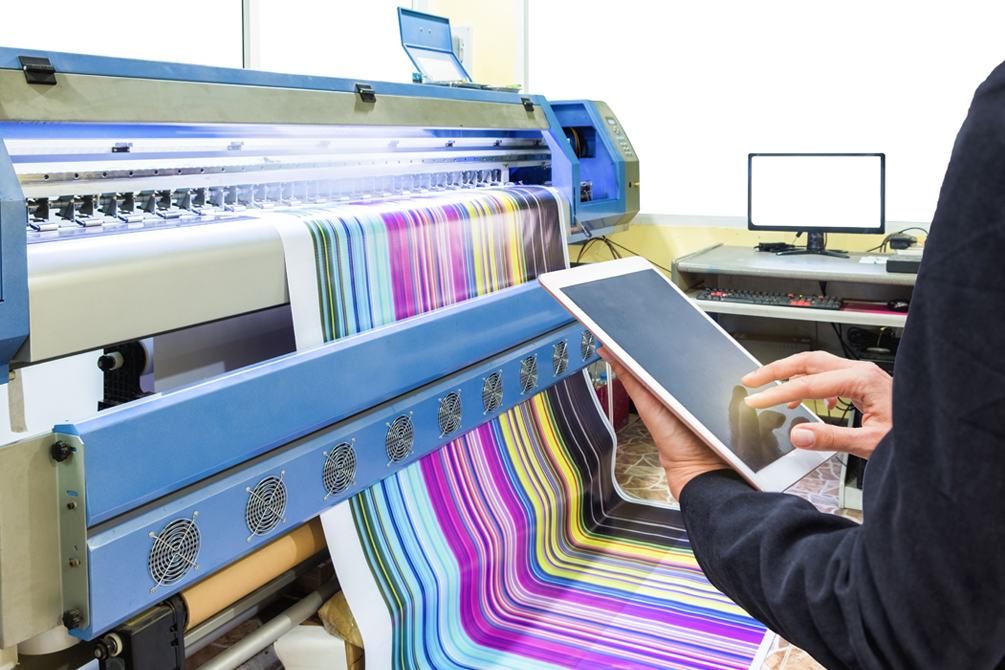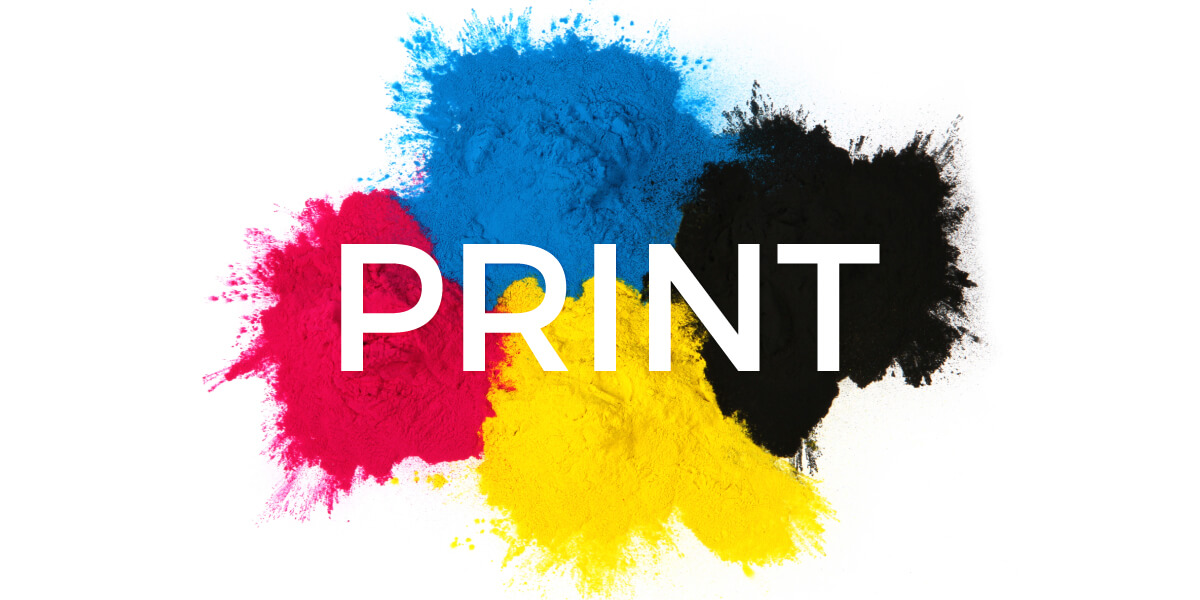The Ultimate Overview to Making Use Of Printing Services for Customized Art Prints
Steering with the world of custom-made art prints needs a clear understanding of numerous printing solutions. Artists have to take into consideration factors such as printing techniques and products to accomplish the preferred result. Each choice, from art work prep work to color calibration, plays a vital role in the end product. As they explore these components, artists can disclose the potential for their job to get in touch with target markets in a purposeful means. What actions can they require to assure their prints attract attention?
Understanding Different Kinds Of Printing Providers
Many individuals may forget the details of printing solutions, understanding the numerous types available is important for anyone looking to produce custom-made art prints. The most common kinds include digital printing, offset printing, and display printing. Digital printing is preferred for its fast turnaround and capacity to create high-grade pictures straight from digital files, making it excellent for tiny runs. On the other hand, offset printing deals superior photo high quality and is affordable for bigger amounts, utilizing plates to transfer ink onto paper. Display printing, commonly used for textiles and advertising products, entails pushing ink with a mesh display, permitting vivid shades and appearances. Each technique has its one-of-a-kind advantages and restrictions, making it vital for musicians and designers to evaluate their details requirements, such as quantity, preferred high quality, and budget, before picking a printing service that straightens with their artistic vision.
Selecting the Right Products for Your Prints
Selecting the proper products is vital for achieving high-grade custom art prints. Understanding the different kinds of paper and the significance of ink high quality can substantially impact the outcome. Musicians should think about these aspects to ensure their vision is properly represented in the printed piece.
Paper Types Explained
Selecting the best paper kind is essential for achieving the wanted visual and resilience in custom-made art prints. Numerous choices exist, each offering distinctive features. For circumstances, glossy paper enhances color vibrancy and detail, making it ideal for digital photography prints. On the other hand, matte paper gives a softer coating, which is preferable for art work that calls for subtlety and texture. Fine art paper, commonly made from cotton or alpha cellulose, offers archival high quality and appropriates for replicating intricate details in paints (Print Shop Near Me). In addition, specialized papers, such as watercolor or canvas, can add unique aesthetic results. Inevitably, selecting the ideal paper type will greatly influence the final discussion, ensuring that the art work is both aesthetically attractive and resilient
Ink Quality Issues
Ink quality plays an important role in the total success of custom-made art prints. High-grade inks ensure dynamic shades, sharp details, and long life, which are important for showcasing artistic job. When picking printing solutions, artists should consider pigment-based inks over dye-based options, as they provide far better fade resistance and color stability. In addition, the choice of ink should complement the selected paper type, improving the print's visual effect. Environmental elements, such as moisture and temperature level, can likewise affect ink efficiency; consequently, musicians should ask about ink solutions that stand up to these elements. Eventually, buying remarkable ink top quality can raise the end product, ensuring that the art print holds to the musician's vision for several years ahead.
Exploring Printing Strategies: Digital vs. Standard
While both traditional and digital printing techniques have their unique benefits, the decision on which method to utilize usually depends upon the certain needs of the artwork. Digital printing masters flexibility and speed, permitting quick turn-around times and the capability to print as needed. This method is specifically helpful for musicians who need tiny runs or unique items, as it eliminates the demand for comprehensive configuration processes.Conversely, conventional printing strategies, such as lithography and display printing, typically create richer shades and appearances, appealing to musicians seeking an extra authentic and responsive surface. These methods can enhance the depth and high quality of the artwork, making them appropriate for larger versions. Furthermore, traditional approaches might use a distinct visual that digital printing sometimes battles to replicate. Eventually, the choice in between these strategies ought to take into consideration factors like wanted high quality, amount, and artistic intent, assisting musicians to the most appropriate alternative for their jobs.

Preparing Your Artwork for Printing
Efficiently preparing art work for printing calls for careful interest to detail, despite the chosen printing method. Artists have to guarantee that their data are created at the ideal resolution, generally 300 DPI, to preserve sharpness and clarity. The correct color mode, usually CMYK for print, is vital to achieve the preferred shade accuracy. Musicians should also consider the dimensions of the art work, making sure to include bleed locations if essential, to stop any kind of undesirable white sides after trimming.Additionally, file styles play an important role; TIFF and PDF are usually preferred for high-grade prints. Prior to entry, it is necessary to examine the artwork for any blemishes or unwanted elements. By diligently inspecting these elements, musicians can improve the probability of their prints lining up with their imaginative vision, ultimately resulting in a successful printing result.
The Importance of Shade Calibration and Proofing
Shade calibration and proofing are crucial steps in the printing procedure, as they guarantee that the final output properly mirrors the musician's vision. Correct shade calibration guarantees that the shades presented on the screen suit those that will be printed. This procedure involves changing the display settings, printer accounts, and inks to achieve a regular shade representation.Additionally, proofing allows artists to sneak peek their job prior to the final print run. This stage enables them to detect and correct any kind of inconsistencies in saturation, information, or color, consequently decreasing costly errors. By making use of hard-copy or electronic evidence, artists can make enlightened choices about modifications required for excellent results.Incorporating shade calibration and proofing right into the printing operations not just improves the quality of the end product but likewise cultivates a dependable collaboration in between the artist and the printing service, assuring complete satisfaction and integrity to the original art work.
Selecting the Perfect Dimension and Layout for Your Prints

Marketing and Selling Your Custom-made Art Prints
Marketing and offering customized art prints calls for a solid brand name identification to stand out in an affordable market. Reliable on-line promo approaches and the strategic use of social media sites platforms can significantly boost presence and interaction. By integrating these elements, musicians can develop an engaging presence that draws in possible buyers.
Structure Your Brand Identification
Developing a strong brand name identity is important for artists looking to successfully market and offer their custom-made art prints. This identification includes the artist's distinct style, values, and tale, which reverberate with potential customers. Musicians ought to create a natural aesthetic existence throughout all platforms, including logos, shade plans, and typography that reflect their imaginative vision. In addition, a clear mission declaration assists communicate the musician's purpose and interest. Engaging narration concerning the motivation behind each item can promote emotional connections with the audience. Consistency in messaging, whether on social media sites or product packaging, improves acknowledgment and trust. By very carefully curating their brand identification, musicians can distinguish themselves in a competitive market, drawing in loyal consumers who value their creativity.
Reliable Online Promotion Approaches
What methods can artists use to efficiently promote their personalized art publishes online? First, creating a professional site showcasing the artwork is vital. This website should include high-grade images and thorough descriptions to engage possible customers. In addition, artists can make use of e-mail advertising by developing a client list to share updates, promotions, and new releases. Teaming up with blog owners and influencers in the art area can broaden reach and reputation. Providing unique items or limited-time discount rates can likewise create seriousness, encouraging acquisitions. Optimizing content for search engines via pertinent keywords will certainly enhance visibility. Finally, keeping a blog about the imaginative process can attract art lovers, fostering a much deeper connection with the target market and enhancing the total marketing approach.
Utilizing Social Media Site Platforms
Social media systems act as effective tools for musicians wanting to market and market their custom-made art prints. By leveraging systems like Instagram, Facebook, and Pinterest, artists can display their work to a substantial audience. Involving visuals and tactical hashtags can enhance presence, drawing prospective customers to their profiles. Frequently posting material, such as brand-new designs or behind-the-scenes procedures, helps keep target market rate of interest and cultivates a sense of neighborhood. Additionally, artists can use targeted advertising to reach certain demographics, improving the chances of sales. Collaborations with influencers or other musicians can further amplify direct exposure. Eventually, a well-curated social networks visibility not just advertises personalized art prints but additionally builds a loyal customer base in time.
Frequently Asked Concerns

Just how Do I Locate Trustworthy Printing Company?
To discover dependable printing company, one need to look into on the internet reviews, look for referrals from peers, compare portfolios, request examples, and examine customer care responsiveness. This detailed strategy assurances notified choices and sufficient end results.
What Is the Normal Turnaround Time for Personalized Prints?
The regular turnaround time for customized prints differs by provider, but normally varies from Related Site a couple of days to 2 weeks. Factors affecting this include order size, complexity, and the certain printing strategies used.
Can I Obtain a Reimbursement if I'm Not Satisfied With My Prints?
The concern of getting a reimbursement for disappointing prints often depends on the particular printing solution's plans. Many business supply satisfaction assurances, while others might have strict return problems, highlighting the importance of reviewing terms ahead of time.
Are There Any Hidden Costs Associated With Printing Providers?
Many printing services may consist of surprise prices such as configuration costs, delivery fees, or service charges for certain products. It's vital for customers to ask about all possible expenditures prior to finalizing their order.
Exactly How Can I Ensure My Prints Are Eco Friendly?
To ensure prints are environmentally pleasant, one must choose eco-friendly inks, recycled paper, and lasting printing methods. imp source Investigating printing solutions that prioritize sustainability and obtaining certifications can better guarantee minimal ecological impact in the printing procedure. Steering via the world of personalized art prints needs a clear understanding of various printing solutions. Many individuals might ignore the intricacies of printing solutions, understanding the numerous types available is important for any person looking to create personalized art prints. The most common types consist of digital printing, balance out printing, and screen printing. Efficiently preparing art work for printing requires cautious focus to detail, regardless of the picked printing technique. Prints intended at galleries could need conventional dimensions to promote framework, whereas special layouts may appeal to collection agencies looking for something distinctive.Lastly, the printing solution's capabilities have to be assessed.